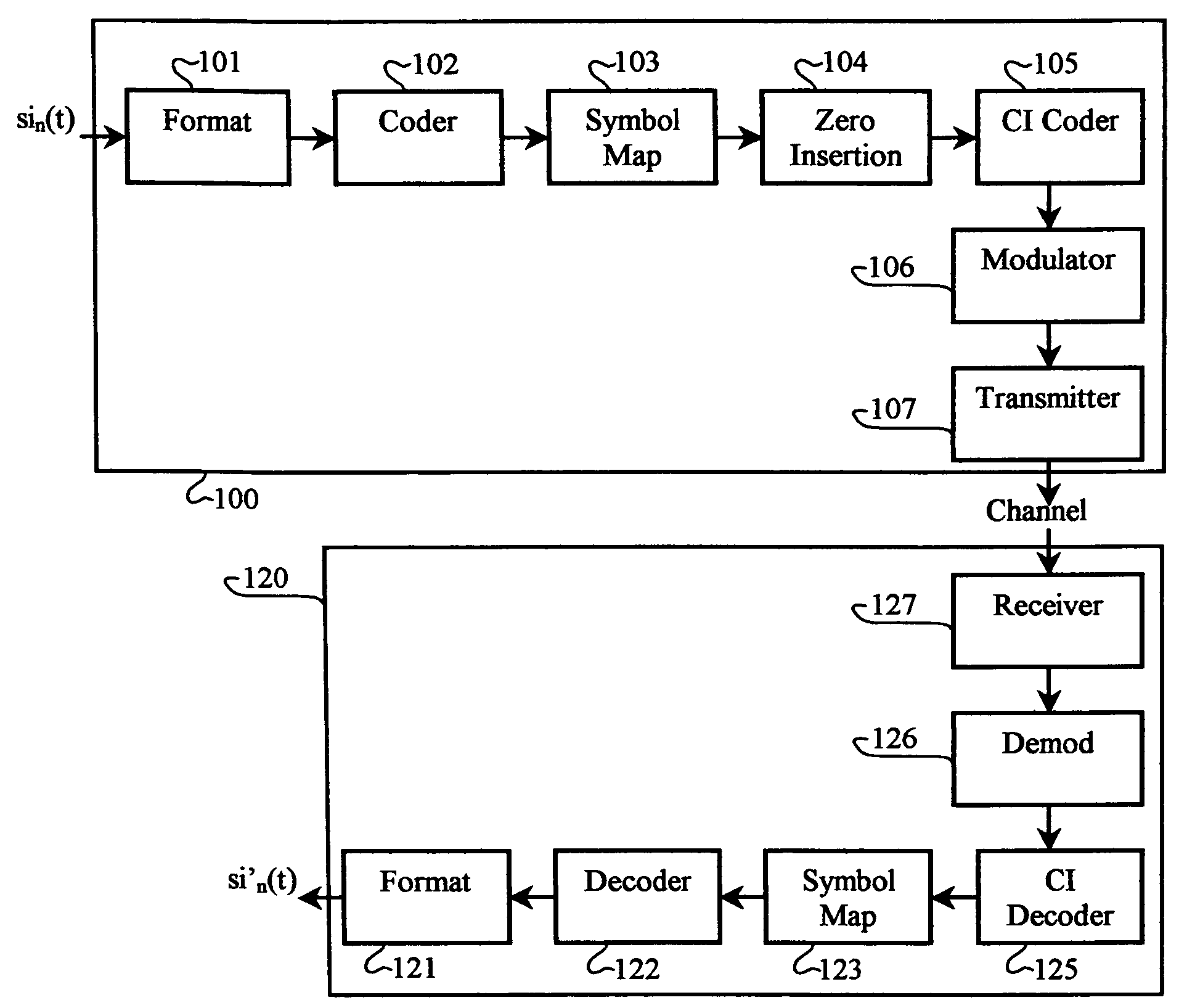Carrier interferometry coding with applications to cellular and local area networks
a carrier interferometry and coding technology, applied in multiplex communication, orthogonal multiplex, baseband system details, etc., can solve the problems of flat fading, mc-cdma, mc-cdma, and mc-cdma, and achieve channel coding enhancement, papr reduction, and spread
- Summary
- Abstract
- Description
- Claims
- Application Information
AI Technical Summary
Benefits of technology
Problems solved by technology
Method used
Image
Examples
Embodiment Construction
[0039]Various types and aspects of channel coding may be integrated into CI coding. Channel coding achieves its effectiveness from spreading (i.e., distributing energy corresponding to each information symbol over multiple transmitted symbols) and redundancy (i.e., increasing the transmitted power per information symbol). Spreading in OFDM channel coding is related to the constraint length in convolutional coding and the block (or code) length in block coding. In convolutional coding, spreading can be achieved by mapping each data symbol into a code symbol that has a memory of a predetermined number of earlier information symbols. In the case of block codes, spreading is achieved by mapping information symbols into code sets that require more bandwidth or time for transmission than is required by the uncoded information. Spreading may take the form of including parity check symbols, or any other type of information about individual information symbols or combinations of information ...
PUM
 Login to View More
Login to View More Abstract
Description
Claims
Application Information
 Login to View More
Login to View More - R&D
- Intellectual Property
- Life Sciences
- Materials
- Tech Scout
- Unparalleled Data Quality
- Higher Quality Content
- 60% Fewer Hallucinations
Browse by: Latest US Patents, China's latest patents, Technical Efficacy Thesaurus, Application Domain, Technology Topic, Popular Technical Reports.
© 2025 PatSnap. All rights reserved.Legal|Privacy policy|Modern Slavery Act Transparency Statement|Sitemap|About US| Contact US: help@patsnap.com



